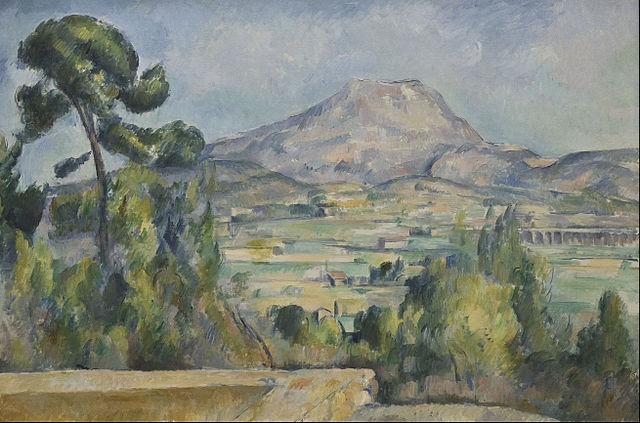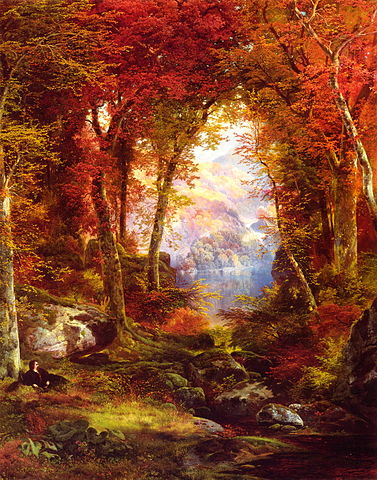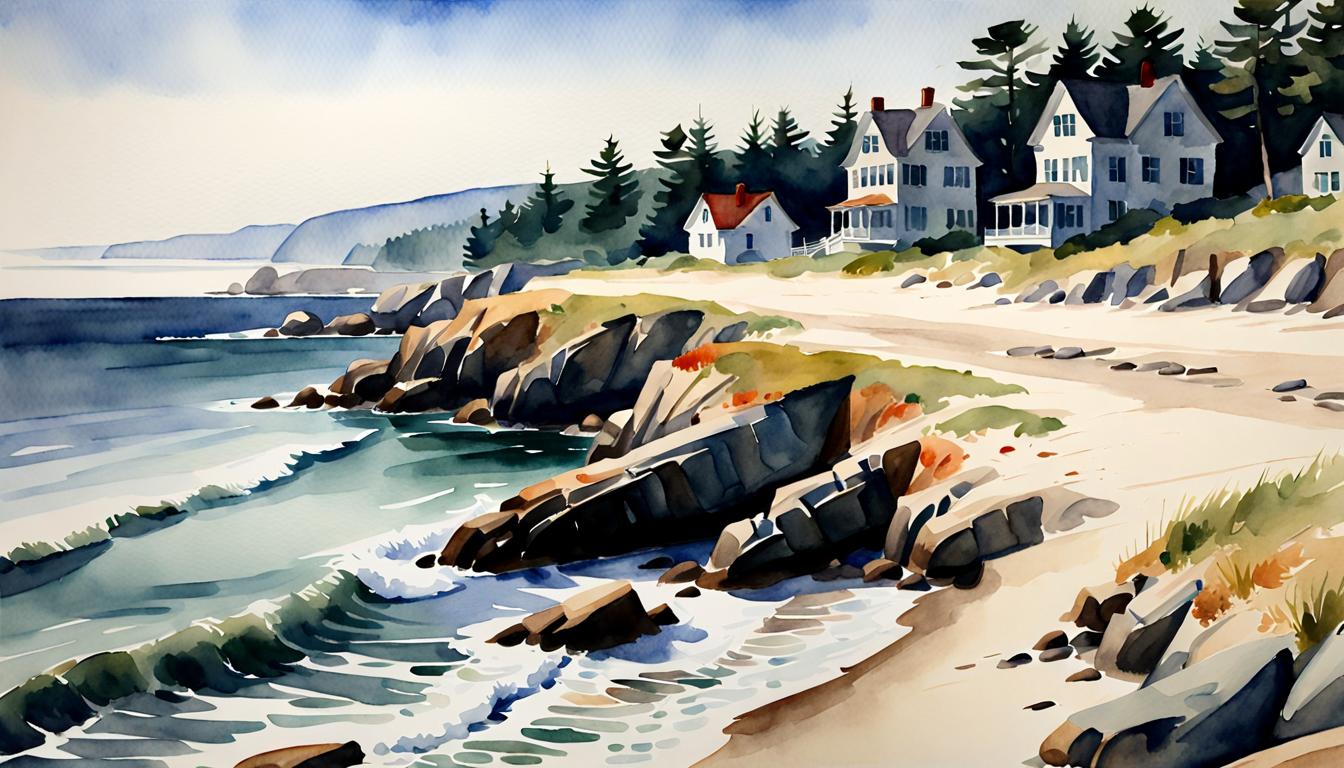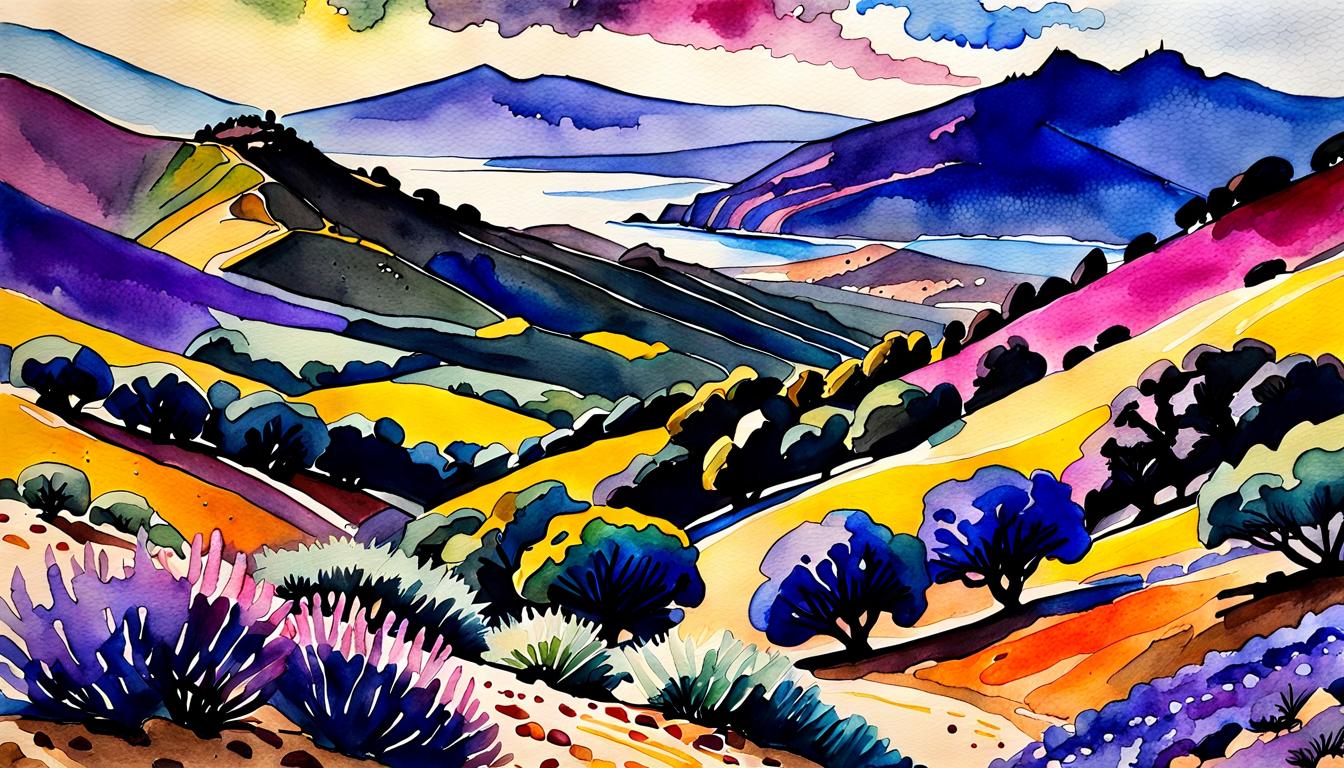Introduction to Paul Cézanne Watercolors: Paul Cézanne (1839-1906) was one of the most influential and versatile artists of the 19th and 20th centuries. He is widely regarded as a pioneer of modern art and a master of color and form. Although he is best known for his paintings in oil, he also experimented with other mediums, such as sculpture, printmaking, and collage. One of his lesser-known but equally fascinating artistic endeavors was watercolor painting.

Watercolor painting is a technique that involves applying transparent or semi-transparent pigments diluted with water to a paper surface. It is often considered to be a more delicate and nuanced form of painting than other techniques such as oil or acrylic. One of the defining characteristics of watercolor is that it is a translucent medium. This means that light is able to pass through the paint, creating a soft and ethereal effect. It also means that the artist has to be careful about the order in which they apply the paint, as layers of color will combine and interact with each other.
In this article, we will explore Paul Cézanne’s watercolor paintings, such as:
- The origins and development of his watercolor practice
- The themes and motifs that he explored in his watercolors
- The techniques and styles that he employed in his watercolors
- The legacy and influence of his watercolors on modern art
The Origins and Development of Cézanne’s Watercolor Practice
Cézanne started using watercolor in the late 1870s, when he was still a struggling artist living in Paris. He was influenced by the Impressionists, who used watercolor to capture the effects of light and atmosphere on landscapes and scenes of everyday life. He also used watercolor as a sketching tool, to prepare for his larger oil paintings or to record his observations from nature.
However, it was not until the 1890s that Cézanne began to use watercolor as a medium for experimentation and expression. He moved back to his native Provence, where he found inspiration in the landscape, the people, and the culture. He also developed a more mature and confident style, that incorporated elements of Post-Impressionism, Cubism, and Classicism. He used watercolor to explore his new aesthetic, as well as to challenge himself with new problems and possibilities.
Cézanne’s watercolor practice reached its peak in the last decade of his life, when he produced some of his most remarkable works in this medium. He used watercolor to create independent works of art, that were not mere studies or sketches for his oil paintings. He also used watercolor to express his personal vision and emotions, that were often hidden or suppressed in his oil paintings. He created watercolors that were more abstract, geometric, and decorative than his oil paintings, revealing a different aspect of his genius.
The Themes and Motifs that Cézanne Explored in His Watercolors
Cézanne’s watercolors reflect the themes and motifs that he explored throughout his career, such as:
- Landscape: Cézanne was fascinated by the landscape of Provence, especially the Mont Sainte-Victoire, a mountain near Aix-en-Provence that he painted repeatedly from different angles and seasons. He used watercolor to capture the essence and structure of the landscape, using simple shapes and colors to create a sense of depth and harmony.
- Still life: Cézanne was also interested in still life, especially fruits, flowers, vases, pots, and other objects that he arranged on tables or shelves. He used watercolor to create contrast and balance between the objects and the background, using light and shadow to create volume and texture.
- Figure: Cézanne was also drawn to figure painting, especially portraits of his family, friends, and models. He used watercolor to create expressive and intimate portraits that showed the personality and mood of the sitter, using loose strokes and vibrant colors to create a sense of life and emotion.
Some examples of Cézanne’s watercolors that demonstrate the themes and motifs that he explored are:
Mont Sainte-Victoire (1902-04): This watercolor shows a view of the mountain from Cézanne’s studio in Les Lauves, near Aix-en-Provence. Cézanne used watercolor to create a geometric and harmonious composition, using simple shapes and colors to represent the mountain, the trees, the houses, and the sky. He also used watercolor to create a contrast between the warm colors of the foreground and the cool colors of the background, creating a sense of depth and perspective.
Still Life with Apples and a Glass of Wine (1877-79): This watercolor shows a simple arrangement of apples, a glass of wine, a plate, and a knife on a tablecloth. Cézanne used watercolor to create a balanced and realistic still life, using light and shadow to create volume and texture in the objects. He also used watercolor to create a contrast between the bright colors of the apples and the wine and the muted colors of the plate and the tablecloth, creating a sense of focus and interest.
Madame Cézanne in a Red Dress (1888-90): This watercolor shows a portrait of Cézanne’s wife, Hortense Fiquet, wearing a red dress and sitting on a chair. Cézanne used watercolor to create an expressive and intimate portrait, using loose strokes and vibrant colors to create a sense of life and emotion in his wife’s face, hair, and dress. He also used watercolor to create a contrast between the solid colors of his wife’s figure and the sketchy colors of the background, creating a sense of depth and space.
The Techniques and Styles that Cézanne Employed in His Watercolors
Cézanne’s watercolors reflect the techniques and styles that he employed throughout his career, such as:
- Layering: Cézanne often used layering in his watercolors, which involved applying multiple layers of paint over each other to create new hues and values. He used layering to create depth, luminosity, and subtle color changes in his watercolors. He also used layering to create contrast, balance, and harmony in his compositions.
- Drawing: Cézanne often used drawing in his watercolors, which involved using pencil or pen lines to outline or define his shapes and forms. He used drawing to create structure, clarity, and stability in his watercolors. He also used drawing to create rhythm, movement, and expression in his compositions.
- Washing: Cézanne often used washing in his watercolors, which involved using large amounts of water to dilute or spread his paint on the paper. He used washing to create fluidity, freshness, and spontaneity in his watercolors. He also used washing to create effects such as gradation, diffusion, or bleeding in his compositions.
- Impressionistic: Cézanne’s early watercolors were influenced by Impressionism, which was a style that aimed to capture the impression or essence of the subject rather than its exact appearance. He used impressionistic techniques such as loose strokes , expressive colors, and simplified forms to create vibrant and impressionistic watercolors that captured the effects of light and color on his subjects.
- Post-Impressionistic: Cézanne’s later watercolors were influenced by Post-Impressionism, which was a style that aimed to express the subject in a more personal and subjective way, using geometric shapes, symbolic colors, and free forms. He used post-impressionistic techniques such as layering, drawing, and washing to create abstract and harmonious watercolors that revealed the essence and structure of his subjects.
- Cubistic: Cézanne’s watercolors also anticipated Cubism, which was a style that aimed to represent the subject from multiple viewpoints and perspectives, using fragmented shapes, contrasting colors, and overlapping forms. He used cubistic techniques such as breaking down, simplifying, and rearranging his shapes and forms to create dynamic and innovative watercolors that challenged the conventional notions of space and reality.
The Legacy and Influence of Paul Cézanne Watercolors on Modern Art
Cézanne’s watercolors had a profound impact on the development of modern art, as they inspired and influenced many artists who came after him, such as:
- Pablo Picasso: He was a Spanish artist who is widely regarded as one of the most influential and versatile artists of the 20th century. He is best known for co-founding Cubism with Georges Braque, as well as creating many other styles and movements such as Surrealism, Neoclassicism, and Expressionism. He admired Cézanne’s watercolors for their geometric and abstract qualities, and he incorporated them into his own paintings, such as Les Demoiselles d’Avignon (1907) and Guernica (1937).
- Henri Matisse: He was a French artist who is widely regarded as one of the pioneers of modern art and a master of color and form. He is best known for founding Fauvism with André Derain, as well as creating many other styles and movements such as Expressionism, Orientalism, and Collage. He admired Cézanne’s watercolors for their expressive and harmonious qualities, and he incorporated them into his own paintings, such as The Joy of Life (1905-06) and The Red Studio (1911).
- Georgia O’Keeffe: She was an American artist who is widely regarded as one of the most influential and original artists of the 20th century. She is best known for her paintings of flowers, landscapes, bones, and shells, which often have a sensual and symbolic meaning. She admired Cézanne’s watercolors for their delicate and nuanced qualities, and she incorporated them into her own paintings, such as Blue Flower (1918) and Black Iris III (1926).
Conclusion
Cézanne’s watercolors are a testament to his genius and versatility as an artist. He used watercolor to create some of his most remarkable works of art, that showcased his unique style and vision. He also used watercolor to experiment with different problems and possibilities, that challenged him as an artist. He created watercolors that were more abstract, geometric, and decorative than his oil paintings, revealing a different aspect of his genius.


